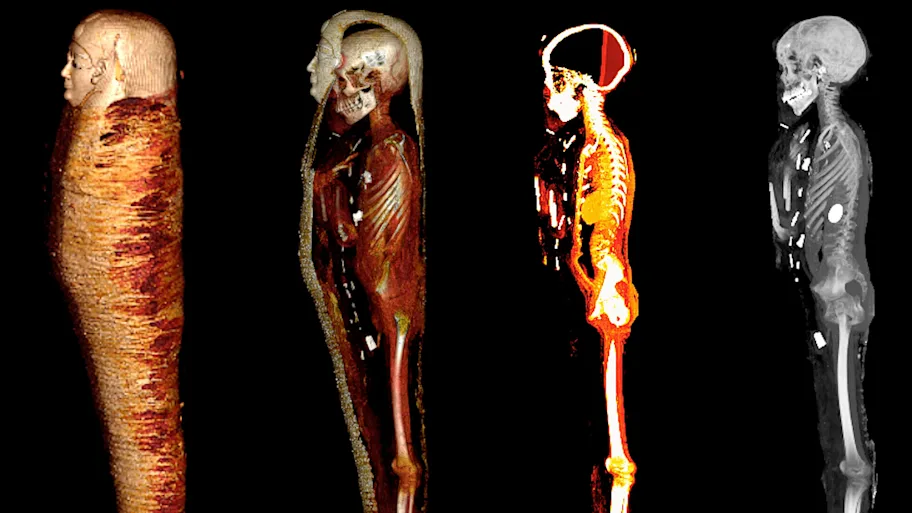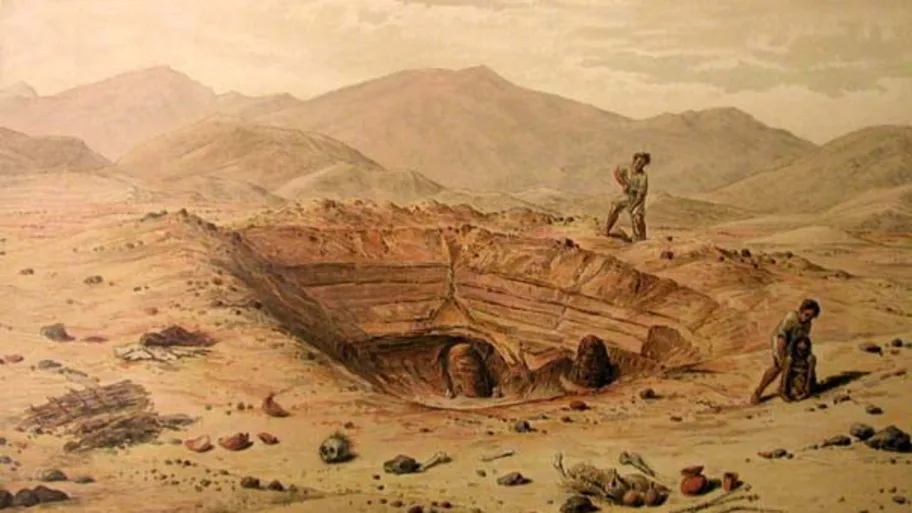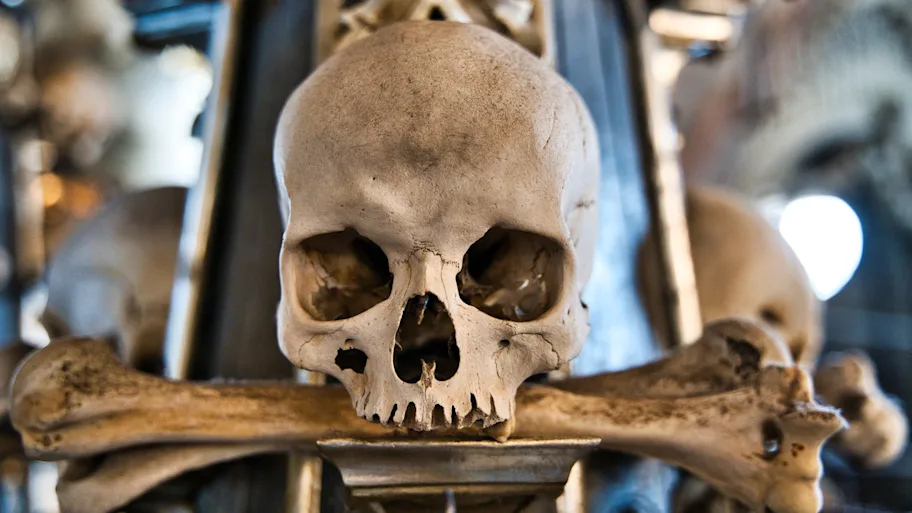
- Science news
- Featured news
- Centuries-old Austrian mummy found to be exceptionally well preserved thanks to unusual embalming method
Centuries-old Austrian mummy found to be exceptionally well preserved thanks to unusual embalming method

Researchers have examined a mummy from a small Austrian village and found a mix of unusual materials has been used to preserve the body. Stuffed with twigs, wood chips, and treated with zinc chloride, the mummy’s torso showed little signs of decay. It is the first report on this embalming method. Further sophisticated examination also allowed the team to identify the mummy as a local parish vicar who lived in the region around 300 years ago.
For centuries, many cultures around the world embalmed their dead, often for religious reasons. Accordingly, embalming methods differ, but not all of them are studied equally well.
In a first report of a previously undocumented embalming method, an international team of researchers has analyzed a mummy from a small Austrian village. Detailed analyses provided insights into little-known mummification techniques and allowed them to identify the body.
“The unusually well-preserved mummy in the church crypt of St Thomas am Blasenstein is the corps of a local parish vicar, Franz Xaver Sidler von Rosenegg, who died in 1746,” said Dr Andreas Nerlich, a pathologist at Ludwig-Maximilians-Universität and first author of the Frontiers in Medicine article. “Our investigation uncovered that the excellent preservation status came from an unusual type of embalming, achieved by stuffing the abdomen through the rectal canal with wood chips, twigs and fabric, and the addition of zinc chloride for internal drying.”
A different type of embalming
The team conducted extensive analyses, including CT scanning, focal autopsy, and radiocarbon dating. The mummy’s upper body was fully intact, whereas lower extremities and head showed considerable post-mortem decay.

During their investigation, the researchers found a variety of foreign material packed in the abdominal and pelvic cavity. Upon opening the body, the team identified wood chips from fir and spruce, fragments of branches, as well as different fabrics, including linen, hemp, and flax. All these materials were easily available at that time and in that region.

The researchers believe it is this mixture of materials that kept the mummy in such good condition. “Clearly, the wood chips, twigs, and dry fabric absorbed much of the fluid inside the abdominal cavity,” said Nerlich. Next to these absorbents, a toxicological analysis showed traces of zinc chloride, which has a strong drying effect.
This way of embalming is different to better-known methods where the body is opened to prepare it. Here, however, the embalming materials were inserted via the rectum. “This type of preservation may have been much more widespread but unrecognized in cases where ongoing postmortal decay processes may have damaged the body wall so that the manipulations would not have been realized as they were,” Nerlich pointed out.
Inside the mummy, the researchers also found a small glass sphere with holes on both ends – perhaps an application to fabric of monastic origin. Since only a single bead was found, it might have been lost during the preparation of the body.

Tracing a life
The mummy was long rumored to belong to von Sidler, but the origin of these rumors is unknown. It was, however, only the current investigation that provided certainty as to its identity. “The identification of the mummy comes from our interdisciplinary analysis, especially with the radiocarbon dating, his body activity pattern, and the stable isotope pattern,” Nerlich said.
Download and read original article
These analyses showed that the mummy died most likely aged between 35 and 45 years old and most probably between 1734 and 1780. These dates match Sidler’s life. In addition, they suggested Sidler ate a high-quality diet based on central European grains, animal products, and possibly inland fish. Towards the end of his life, he may have experienced food shortages, likely due to the War of Austrian Succession. The lack of major sign of stress on the skeleton fits the life of a priest without hard physical activity. There also was evidence of a long-term smoking habit, and lung tuberculosis towards the end of his life.
“We have some written evidence that cadavers were ‘prepared’ for transport or elongated laying-out of the dead – although no report provides any precise description,” Nerlich concluded. “Possibly, the vicar was planned for transportation to his home abbey, which might have failed for unknown reasons.”

REPUBLISHING GUIDELINES: Open access and sharing research is part of Frontiers’ mission. Unless otherwise noted, you can republish articles posted in the Frontiers news site — as long as you include a link back to the original research. Selling the articles is not allowed.







